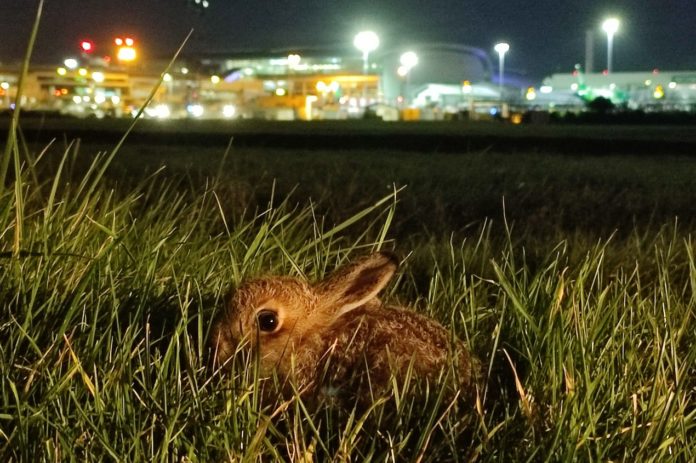Researchers have found the times of day when hares are most likely to be hit by planes at Dublin Airport. They think their findings could help cut down on expensive “runway roadkill” around the world.
Motion-activated camera traps were used in a study conducted by Irish Research Council Scholar Samantha Ball at the School of Biological, Earth and Environmental Sciences (BEES) in University College Cork to gather activity information on the population of hares that reside on the airfield at Dublin Airport.
The study used the information to determine when hare strikes, or wildlife-aircraft collisions, were more likely to happen.
The findings of the study were published today in the journal Remote Sensing in Ecology and Conservation.
The new study comes after a team led by Ms. Ball found in a paper published the previous year that the number of wildlife-aircraft collisions involving mammals is rising by as much as 68% annually in some nations and has resulted in damage that has cost more than $103 million in the United States alone over a 30-year period.
“Firstly, we identified two distinct time periods of increased strike risk,” says the author, “generally around sunrise and in the hours approaching midnight.”
The findings of the study also found the times when hares attacked at the airfield were similar to the times of day when hares were most active at the airfield but when there were fewer planes flying.
This suggests that rather than attempting the nearly impossible process of modifying aircraft activity, we may direct strike prevention efforts, like as scare methods and runway patrols, directly into the hare population itself.
This investigation has given us the ability to pinpoint times of the day and year when there may be a larger chance of hare strikes, indicating when strike prevention efforts should be stepped up to keep hares away from the busy runway.
Although they concentrate on the Irish hare at Dublin Airport in this study, the research can also be used at other airfields, according to the researcher.
“This method can be used to identify periods of increased strike risk with ground-dwelling species of concern worldwide, such as deer and large carnivore species,” she added.
Image Credit: Getty
You were reading: ‘Runway Roadkill’: When Animals Strike Most
